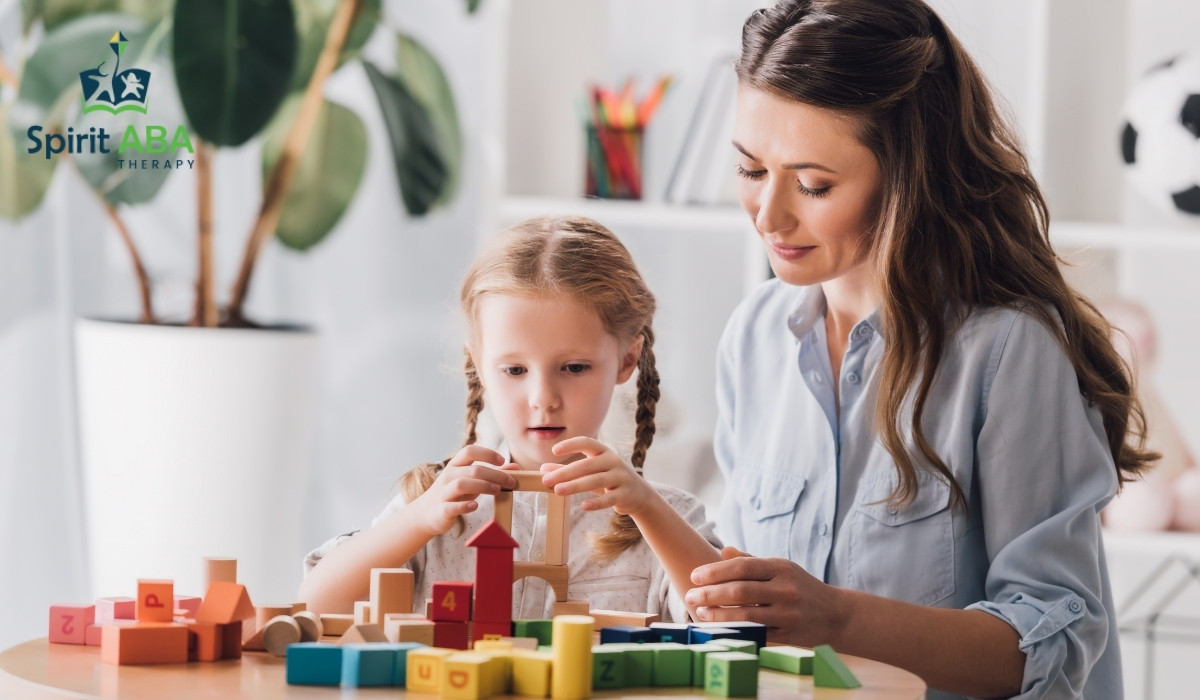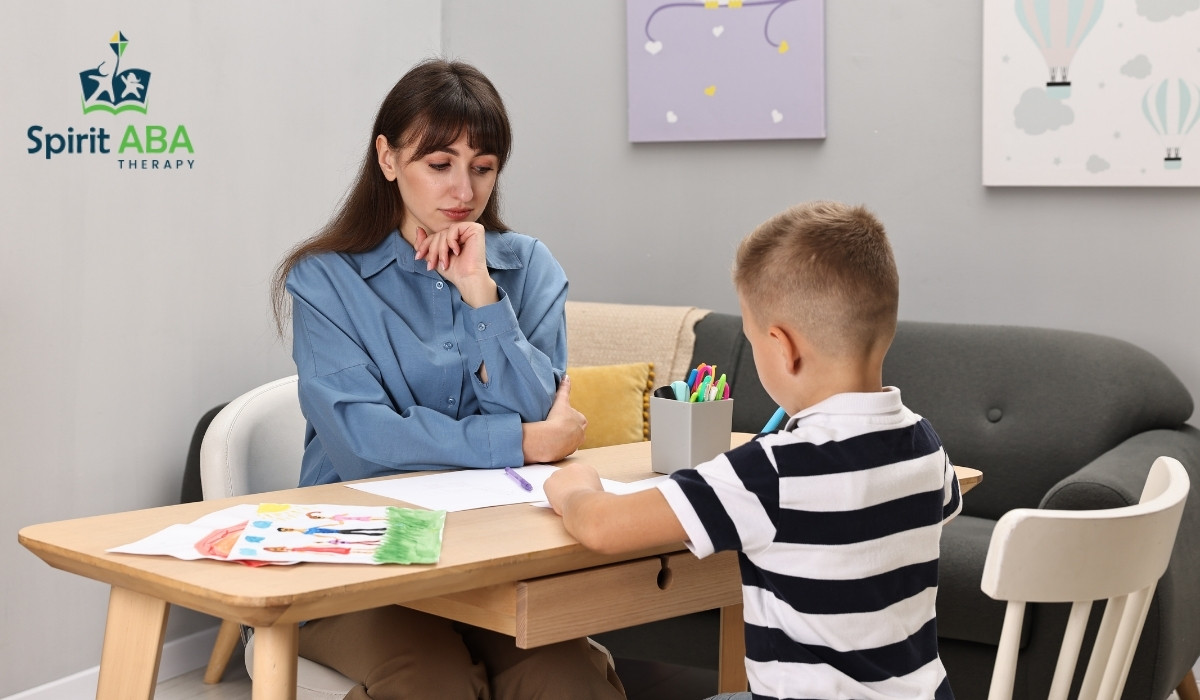Key Points:
- SD in ABA therapy stands for “Discriminative Stimulus,” a key tool that signals your child when a specific behavior will be reinforced.
- Understanding SD can improve learning efficiency, independence, and communication skills in children receiving ABA therapy.
- Practical examples and strategies can help parents recognize SDs in daily routines and support their child’s progress at home.
If you’ve heard your child’s ABA therapist mention “SD” and wondered what it means, you’re not alone. In ABA therapy, SD stands for Discriminative Stimulus. This is a cue or signal that tells your child that a particular behavior will lead to a reward or reinforcement. Essentially, it’s a way of letting the child know, “If you do this, something positive will happen.”
Understanding SD is fundamental to ABA therapy because it’s the starting point for teaching new skills. Without clear SDs, children may struggle to learn what behaviors are expected in different situations. By recognizing and responding to SDs, your child can gain confidence and improve their ability to interact with the world around them.
How SD Works in Everyday ABA Therapy
ABA therapy is all about systematically teaching skills through repetition and reinforcement. The SD acts like a guidepost, helping children know when and how to respond appropriately.
For example, if a therapist says “Clap your hands” and gives a high-five when the child claps, the verbal instruction is the SD. The child learns that following this specific cue leads to a positive outcome. Over time, the child begins to associate the SD with the expected behavior and the reinforcement that follows.
Here are some common ways SDs appear in ABA therapy:
- Verbal SDs: Spoken words or instructions, like “Sit down” or “Give me the toy.” These are the most common SDs in therapy sessions.
- Visual SDs: Pictures, cards, or symbols that indicate an action, often used in teaching communication or daily routines.
- Gestural SDs: Hand signals, pointing, or other body language cues that signal a desired response.
- Environmental SDs: Situational cues from the surroundings, such as a stop sign or a doorbell, which can guide behavior in natural settings.
By learning to recognize and respond to SDs, children can begin to perform desired behaviors more consistently and independently, which is a key goal of ABA therapy.
Why Understanding SD is Important for Parents
As a parent, understanding SDs can help you support your child outside of therapy sessions. When you know what cues trigger certain behaviors, you can reinforce positive skills in everyday life and reduce frustration for both you and your child.
Here are some of the ways parents benefit from understanding SDs:
- Consistency Across Environments: Children often need repetition in multiple settings to master a skill. Knowing SDs allows you to provide consistent cues at home, reinforcing what’s learned in therapy.
- Improved Communication Skills: Many children with autism respond better to clear, predictable cues. Recognizing SDs helps you guide communication and social interactions.
- Behavior Management: Understanding which cues trigger specific behaviors can reduce unwanted behaviors and encourage positive ones.
By learning to identify SDs, you’re not only supporting your child’s growth but also helping bridge the gap between therapy and real-life application.
5 Practical Examples of SDs in ABA Therapy
Understanding SDs can feel abstract at first, but real-life examples make it easier to grasp. Here are five practical examples of SDs and how they work in teaching children skills:
Greeting Others
Before teaching a child to say “Hello,” the therapist may hold out a hand or smile, signaling that it’s time to greet. The hand gesture and eye contact serve as an SD, prompting the child to respond appropriately. Over time, the child associates the visual cue with the expected greeting behavior.
Requesting Items
Using a picture card or a verbal prompt like “Do you want the ball?” can act as an SD. When the child hands over the card or says “Yes,” they receive the item as reinforcement. This teaches them how to request objects and communicate their needs effectively.
Following Instructions
During a therapy activity, a therapist might say, “Put the blocks in the box.” The verbal instruction is the SD, and placing the blocks correctly leads to praise or another reinforcer. Repetition helps the child learn to follow multi-step directions.
Daily Living Skills
Teaching skills like brushing teeth or washing hands can involve SDs. For instance, showing the toothbrush (visual SD) and saying “Brush your teeth” (verbal SD) cues the child to perform the task. Reinforcement follows completion, reinforcing the behavior.
Social Play Skills
In group activities, a therapist might use gestures or verbal prompts like “Take a turn” as an SD. When the child responds by sharing a toy or waiting their turn, reinforcement encourages cooperative play and social engagement.
By applying these examples at home, parents can support their child’s skill development and reinforce what they learn during therapy sessions.
 Tips for Parents to Recognize and Use SDs
Tips for Parents to Recognize and Use SDs
Parents play a critical role in supporting ABA therapy. Here are practical strategies to help you recognize and effectively use SDs in everyday life:
- Observe Carefully: Watch how your child responds to different cues during therapy. Take note of which prompts lead to successful responses.
- Be Consistent: Use the same verbal, visual, or gestural cues at home that the therapist uses to provide continuity.
- Pair SD with Positive Reinforcement: Immediately follow the correct behavior with praise, a small reward, or positive attention to strengthen learning.
- Gradually Fade Prompts: Over time, reduce the intensity of the SD or the type of prompt to encourage independent responding.
- Incorporate SDs into Daily Routines: Mealtime, bedtime, and playtime all offer opportunities to practice following SDs in natural settings.
By implementing these strategies, parents can create a supportive environment that reinforces their child’s learning and builds confidence.
Common Misconceptions About SDs
Even with clear explanations, SDs can sometimes be misunderstood. Here are a few common misconceptions:
- SDs are commands: While they often look like instructions, SDs are specifically cues signaling that reinforcement is available for a particular behavior. They are not punishment or criticism.
- SDs are only for therapy sessions: SDs occur everywhere—from traffic lights to classroom signals. Teaching children to respond to SDs in multiple contexts improves generalization.
- Children should always respond immediately: Learning takes time. A child might need repeated exposure to the SD before they consistently respond correctly.
Understanding these nuances can help parents and caregivers approach SDs with patience and clarity, enhancing the child’s learning experience.
 Integrating SDs into Home Practice
Integrating SDs into Home Practice
Applying SDs outside therapy sessions is a powerful way to accelerate learning. Here’s how parents can integrate SDs into daily routines:
Create Visual Schedules
Use pictures or icons to signal tasks like getting dressed, brushing teeth, or completing homework. Each image acts as an SD, cueing the expected behavior.
Use Everyday Opportunities
Meal preparation, cleanup, or sharing toys provide natural opportunities for SDs. For instance, holding up a plate can cue the child to set the table.
Practice Social Skills
During playdates or family interactions, use SDs to prompt greetings, sharing, or polite requests. Consistency helps children apply what they’ve learned in therapy.
Reinforce Independently
Gradually reduce prompts as your child becomes more proficient. Praise or small rewards should follow the correct behavior to reinforce learning.
Track Progress
Keep a simple log of which SDs your child responds to successfully. This helps identify areas of strength and those that need more practice.
By embedding SDs into natural routines, parents can create a seamless connection between therapy and real-life skills.
The Role of SD in Helping Children Learn and Grow
SD, or Discriminative Stimulus, is a foundational concept in ABA therapy. It signals when a behavior will be reinforced and is crucial for teaching new skills, improving communication, and promoting independence. By understanding SDs, parents can provide consistent support at home, recognize cues in daily life, and help their child generalize skills across settings.
Practical examples—from greetings to daily routines—illustrate how SDs guide learning in real-world contexts. Recognizing and implementing SDs can transform your child’s progress and enhance their confidence and independence.
 How Spirit ABA Supports Families
How Spirit ABA Supports Families
ABA therapy is most effective when parents are involved and understand the principles behind the strategies, like SDs. Spirit ABA works closely with families to ensure children receive consistent guidance both in sessions and at home. Our programs focus on practical skill-building, communication development, and social engagement. By incorporating SDs and other ABA strategies, we help children thrive in Nebraska, Colorado, and Iowa.
If you’re looking to give your child the tools to succeed, explore how ABA therapy in Colorado, Nebraska, and Iowa can make a difference. Spirit ABA offers supportive, structured programs designed to promote growth, independence, and confidence. Contact us today to learn how our personalized approach can help your child reach their full potential.


